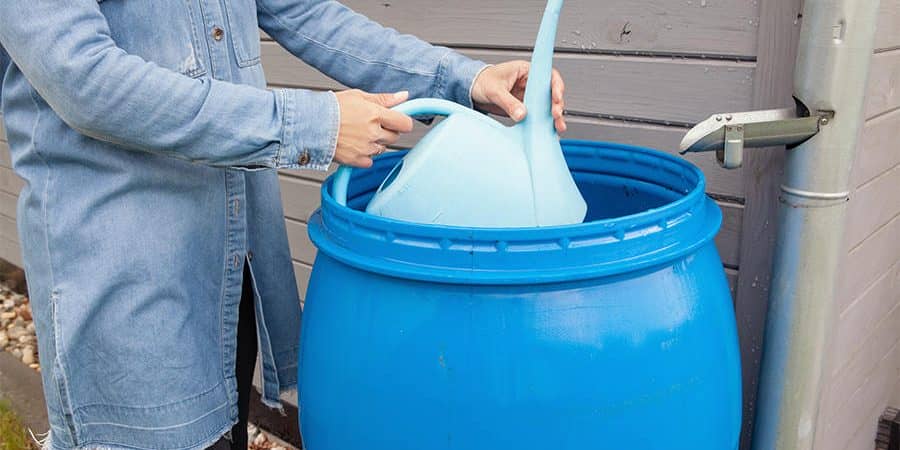For a relatively small garden, setting up a rainwater harvesting system can be a relatively simple and rewarding project.
- Assess your garden and available space
Determine the suitable location for installing the rainwater harvesting system. Consider factors such as the size of your garden, the available roof area for catchment, and proximity to areas where you plan to use the harvested water. - Calculate water needs
Determine how much water you will need for your garden or other purposes. This will help you determine the size of the storage tank or containers required. - Install gutters and downspouts
Install gutters along the edges of your roof to collect rainwater. Ensure they have a proper slope towards the downspouts to allow water to flow efficiently. Connect the downspouts to the storage tanks or containers. - Choose storage containers
Select suitable storage containers for holding the harvested rainwater. Depending on your space and requirements, you can choose from various options such as rain barrels, above-ground tanks, or underground cisterns. Ensure the containers are clean and made of food-grade materials if you plan to use the water for drinking or edible plants. - Install a filtration system
Install a filtration system to remove debris, leaves, and other contaminants from the collected rainwater. This can be a mesh or screen filter at the entry point of the downspouts or a first-flush diverter system that diverts the initial dirty runoff. This helps ensure the water quality remains high. - Connect overflow and drainage
Set up an overflow system or diversion mechanism to handle excess rainwater when the storage containers are full. This prevents flooding and directs the overflow away from buildings or into a suitable drainage system. - Consider a pump and distribution system
Depending on your needs, you may need a pump to pressurise the water for distribution. Connect the pump to an outside tap or plumbing system to supply the harvested water to your garden or other areas of your property. - Add additional treatment if needed
If you plan to use the harvested rainwater for drinking or other potable purposes, consider adding appropriate treatment systems such as filtration, UV treatment, or chemical disinfection to ensure water safety.
Remember to check local regulations or permits that may be required for rainwater harvesting in your area. It's also a good idea to consult with professionals or seek guidance from local water conservation organisations for specific recommendations tailored to your garden and local conditions.
The basic principles of setting up a rainwater harvesting system remain the same for both small and big gardens. However, there may be some variations in terms of scale and the specific components used. In the case of a larger garden, you may need to consider the following additional aspects: - Increased catchment area
A big garden may have a larger roof area or multiple roofs from which rainwater can be collected. Ensure that you have sufficient guttering and downspouts to capture water effectively from all the available catchment surfaces. - Larger storage capacity
With a bigger garden, you might require a larger storage capacity to meet the water needs. This can be achieved by installing multiple storage tanks, larger above-ground tanks, or even underground cisterns, depending on the available space and your requirements. - Multiple distribution points
If your big garden has different zones or areas that require water, you may need to plan for multiple distribution points. This could involve installing additional outside taps, irrigation systems, or a network of pipes to ensure water reaches all the desired locations. - Pumping system
Depending on the size of your garden and the elevation differences between the storage tanks and the distribution points, you might need a more powerful pump or even multiple pumps to ensure adequate water pressure throughout the garden. - Professional assistance
Setting up a rainwater harvesting system for a big garden may involve more complex design considerations and installation requirements. It could be beneficial to seek professional assistance from experts or contractors who specialise in rainwater harvesting systems. This will ensure optimal performance and efficiency.
Remember to check with local authorities regarding any permits or regulations specific to rainwater harvesting systems for larger properties. Professional advice can help you determine the best design, equipment, and implementation strategy to meet your specific needs while adhering to local guidelines.
Find out more about the benefits of investing time in rainwater harvesting here. Don’t forget, if you need some help, our team of experienced plumbers are always at hand if you need an expert to ensure proper connections between downspouts, storage tanks, and distribution points.

